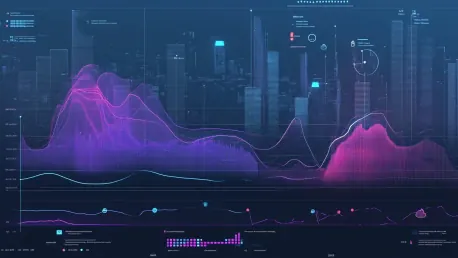Air quality research has become a critical component in understanding and mitigating the impact of pollution on public health and the environment. Innovative approaches and readily accessible data are essential for scientists, policymakers, and educators to make informed decisions. NASA’s Atmospheric Science Data Center (ASDC) has made significant strides in enhancing the availability of air quality data with the introduction of a comprehensive GitHub repository. This new resource aims to facilitate research and improve global air quality by offering a plethora of tools, tutorials, and scripts.
Enhancing Air Quality Research
ASDC’s Comprehensive GitHub Repository
The ASDC’s GitHub repository provides an extensive array of resources designed to help Earth science data users access and utilize atmospheric data more efficiently. By making valuable information accessible, NASA aims to address critical environmental challenges and improve global public health. The repository includes essential resources such as tutorials, scripts, and guides that can assist researchers in leveraging data from important instruments like the Tropospheric Emissions: Monitoring Pollution (TEMPO). The TEMPO instrument, which monitors pollution levels, plays a crucial role in providing real-time data on air quality.
In the repository, users will find a wealth of information on how to access and use atmospheric data effectively. The ASDC team, led by experts such as Dr. Hazem Mahmoud, emphasizes the importance of making these tools accessible and user-friendly. The open-source scientific publishing system Quatro was employed to ensure excellent file presentation and readability. One of the standout features of the repository is its user-focused design, which includes a navigation sidebar, internal notebook navigation tables, and links to additional ASDC resources. These elements are crafted to help users discover, explore, and learn from the provided tutorials seamlessly.
Empowering Researchers and Educators
During a workshop at the January 2025 American Meteorological Society Annual Meeting, NASA data experts introduced attendees to the GitHub repository’s robust capabilities. The workshop drew an engaged audience of researchers, faculty, and students eager to harness ASDC datasets and tools. Key figures, including Elizabeth Joyner, Dr. Hazem Mahmoud, and Dr. Alexander Radkevich, guided participants through the practical applications of these resources within the Openscapes cloud-computing environment known as 2i2c. This hands-on approach illustrated how to download and set up ASDC’s Jupyter notebooks in this environment, fostering a better understanding of data workflows.
A particular highlight of the workshop was the demonstration of methods for comparing gas column data from the TEMPO instrument with ground-based Pandora spectrometer measurements. This comparison allows researchers to verify satellite-based observations with ground truth data, enhancing the accuracy and reliability of their findings. Attendees were also introduced to the Earthaccess python library, a versatile tool for searching and downloading Earthdata holdings. The library’s functionalities streamline the process of obtaining large volumes of data, significantly reducing the time required for data access and preparation.
Streamlining the Research Process
Improving Data Workflows
Efficient data workflows are at the heart of successful scientific research. Elizabeth Joyner emphasized that numerous Earth data scientists adhere to the 80/20 rule, where 80% of their time is spent on finding, accessing, and preparing data, leaving only 20% for the actual analysis and insight development. NASA’s commitment to enhancing research efficiency is evident in the resources provided through the GitHub repository. By offering more practical workflows and tools, they aim to shift the balance, allowing scientists to dedicate more time to analyzing data and drawing meaningful conclusions.
The repository offers new python libraries and tools specifically designed for subsetting, analyzing, and visualizing TEMPO data. These resources aim to simplify and accelerate the research process, enabling scientists to delve deeper into atmospheric studies without the burden of cumbersome data preparation tasks. By fostering an environment where researchers can focus more on analysis, NASA hopes to drive innovation and advance the understanding of atmospheric processes and air quality.
Fostering Collaboration and Future Research
Air quality research has become pivotal in understanding and mitigating the detrimental effects of pollution on public health and the environment. For scientists, policymakers, and educators to make well-informed decisions, innovative methods and easily accessible data are crucial. NASA’s Atmospheric Science Data Center (ASDC) has made remarkable advancements in making air quality data more accessible. With the launch of an extensive GitHub repository, NASA provides a valuable resource that aims to aid research and enhance global air quality understanding. This repository offers an abundance of tools, tutorials, and scripts, making it easier for stakeholders to leverage available data effectively. By equipping users with these resources, NASA facilitates better analysis and interpretation of air quality metrics. This initiative is geared toward promoting more effective solutions and fostering a collaborative approach to tackling air pollution issues worldwide. The ASDC’s efforts exemplify the importance of accessible data in driving scientific progress and public health initiatives.









